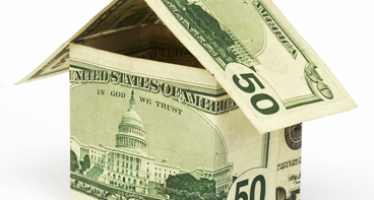Flat Tax idea revived
Jan. 15, 2010
By JOHN SEILER
Challenging times demand innovative answers to problems. This is such a time for the California state budget, which has been chronically out of whack for a decade. The governor’s January budget proposal doesn’t make matters any better.
Almost all solutions to the problem look exclusively at the demand side of the equation: the immense increases in spending by the state government.
But there’s another side: the supply side – the way taxes are brought in by the state.
That’s why it’s time to bring back an idea economist Arthur Laffer first proposed in the early 1980s: a flat income tax for California. Laffer heads Laffer Associates, an investment firm in Nashville, Tenn. [i]
“A flat tax would stop all these companies from moving from California,” he told me, by simplifying and lightening the tax load on both businesses and persons. It also would end the boom-bust volatility of tax receipts, which in boom times leads to wild spending that, in bust times, must be paid for with higher taxes that punish income producers. The days are long gone when California’s balmy climate was enough to prevent companies from leaving for Nevada, Texas and other states with better tax rates.
The hemorrhaging of jobs from California in recent years is real, especially in the lucrative high-tech sector. As Jan Norman reported in The Orange County Register:
“It’s well known that California has been bleeding manufacturing jobs for decades, but less known is that the state is losing its high-salary, high-tech edge to other states, says Gino DiCaro of the California Manufacturing & Technology Association.
“A new Milken Institute study of California’s manufacturing in general, makes the point. In 1990, almost 1 in 4 high-tech manufacturing jobs — 752,600 — were in the Golden State. By 2007, it was less than 1 in 5 — 485,900.
“It’s probably lower now. Between 2007 and 2008, California lost another 39,000 jobs in all manufacturing categories.”
The flat tax proposal
Laffer’s proposal is simple. It would be enacted through a constitutional amendment passed by a majority of voters. The details:
1. Get rid of all other state and local taxes: property taxes, sales taxes and gas taxes. The only exception would be “sin” taxes, such as those on cigarettes, because those are designed to change behavior.
2. Institute two taxes:
A flat income tax of between about 6.4 percent and 6.9 percent. The only deductions would be for a mortgage or rent in the place of principal residence, and for charitable contributions.
A tax on business net sales calculated this way: total sales less purchases from other companies. Its rate would be the same as for income: between about 6.4 percent and 6.9 percent. The tax is the same as a value-added tax (VAT). But Laffer told me that there’s this big difference: In Europe and other places, a VAT is imposed on top of other taxes, so it’s a mess. In California, it would be the only state business tax of any kind.
A key point is that the flat tax would be placed on all income, including that of low-income persons. Even if you made only $5,000 of income, you would pay the income tax. So if the rate is, say, 6.4 percent, you would pay $320.
Wouldn’t that be unfair to the poor? No, because they would not be paying state sales, property and gas taxes. And the mortgage and rent deduction would sharply reduce the amount paid.
Revenue Neutral
A key element of the flat-tax proposal is that it is “revenue neutral” – it would bring in the same amount of income as the current, convoluted system. For fiscal 2010-11, that’s likely to be about $90 billion. So nothing would be “lost.” Although budget cuts are advisable for other reasons, they would not be required should a flat tax be adopted.
The flat tax, if adopted, would be phased in over several years. The first year, the tax rate would be set slightly higher than expected, so a deficit would not result – say, at 7 percent of income. If excess revenue actually is collected, that money would be saved (as discussed below).
The second year, the tax rate would be adjusted to reflect what happened in the first year. For example, suppose the first year’s 7.0 percent rate was too high, and 6.4 percent would have been adequate to produce a revenue-neutral tax stream. The rate would not be cut all the way down to 6.4 percent, just to be safe, but to an intermediate number, such as 6.7 percent.
In the third year, it might turn out that that the 6.7 percent rate was still too high. The tax rate would be adjusted again to, say, 6.6 percent.
This seesaw process would produce the proper revenue-neutral rate in just a couple of years. After that time, the rate would become part of the law could not be changed except by a two-thirds vote of the people. The excess revenues during the adjustment period would not be used on new spending, but would be used as a rainy day fund, or to reduce state debt.
Tax volatility
One of the major benefits of a flat tax is that it would eliminate the immense volatility of California tax receipts. A good example was when Gray Davis was elected governor in 1998, at the height of the dot-com stock-market boom. His first two budgets, for fiscal years 1999-2000 and 2000-2001, saw revenues increase by 15 percent each year. And Davis and the Democrats who controlled the Legislature spent almost every FDR dime of it.
“For fiscal year 2000-01,” Laffer pointed out, “25 percent of tax receipts were from exercised tax options or capital gains.” Then the dot-com bubble burst, and almost all those tax receipts from those two areas evaporated. Davis faced a budget crisis that contributed to his 2003 recall.
Laffer said we shouldn’t blame the politicians for the problem. “You can’t train a pig to not be a pig,” he said. Instead, a structural change – the flat tax – would take most of the volatility out of the system. Taxes depending on high profits – such as capital gains – would be replaced with a flat tax on incomes, which are generally stable even in down times.
Other methods have been suggested for getting rid of the tax volatility, such as instituting a “split roll” on property taxes, eliminating Proposition 13’s limits on increasing property taxes on commercial property – while keeping the limits on taxes on homes. Critics of such plans say that such a change would be a back door to getting rid of Prop. 13 entirely.
A flat tax would maintain Prop. 13 in full force. The property tax would be eliminated, taking care of that problem. But Prop. 13’s mandate that two-thirds of voters must approve tax increases would remain in place. So if, for instance, a group wanted to increase the tax rate to pay for a new program, it would have to get the approval of two-thirds of state voters.
Local control
One potential problem of a flat tax would be that it further would reduce local control by counties, cities and school districts. But the state already has such excessive control through the existing tax system. Almost all local tax money comes through the state tax system.
Under a flat tax, local governments could, as now, use the two-thirds rule of Prop. 13 to raise taxes to pay for, say, new school construction or a city park.
Federal tax equation
One other reform talked about would be making California’s income tax a percentage of the federal tax, as is done in 35 of 41 states with income taxes. Only six states, including California, have their own complicated state income tax system that legislators can use to reward or punish special interests. A real reform would be to junk that system in favor simply calculating California’s income tax as a percentage of income as reported on the federal tax forms.
Could such a system be blended with a flat tax? So that, for example, whatever is paid to the IRS, an additional 20 percent would be sent to the state government. If you paid 25 percent of your income to the feds, one fifth of that, or an additional 5 percentage points, would go to the state.
That’s a possibility, Laffer replied. But the problem is the great progressivity of the federal tax code, with rates currently going from 0 percent to 35 percent. It wouldn’t be a real flat tax. And the volatility mentioned above would remain.
Sin taxes
Some of us don’t consider cigars and bourbon to be “sins.” But in tax parlance that’s what they are, making them eligible for “sin taxes,” such as the Rob Reiner’s 50-cent-per-pack tax on tobacco to fund government-controlled children’s programs.
Under Laffer’s flat-tax proposal, such taxes would remain because they are intended to alter behavior; they would be collected outside the flat-tax system.
Gas taxes would be eliminated, with road funding coming from the flat tax. A problem I raised was that, currently, the more you drive, the more you pay – through gas taxes. Laffer conceded that this would be a problem, but gas taxes might be maintained if they were be considered “sin taxes.” (If that did happen, and gas taxes were retained, the flat tax rate would be cut accordingly.)
Alternatively, more highways could be turned into toll roads.
Is the time right?
No reform proposal is perfect, as some of the discussion above shows. That’s especially true for taxation, where the government literally has the power of force to take your income and property.
Even under a flat tax, the rate could be raised, or the specifics altered, by a two-thirds vote of the people. And a constitutional amendment – severely changing the flat tax or eliminating it – could be passed by just majority vote.
But Laffer believes that, if a flat tax were instituted, it would be such a smashing success that no one would want to change it. It would ignite growth that would produce new businesses and jobs that California, again, would be an economic golden state. The increased production would bring in ample revenues to fund state programs.
At a minimum, the time is right to begin discussing the flat tax. Beside Laffer’s idea, others flat-tax proposals should be brought forth and debate promoted.
John Seiler, an editorial writer for The Orange County Register for 19 years, is an independent writer. His email: [email protected].
[i] Laffer was the major designer of both California’s Proposition 13 tax cuts in 1978 and Ronald Reagan’s 1981 and 1986 tax cuts that propelled economic growth in America for almost 30 years, until the recent meltdown.
He was a longtime resident of California (his Ph.D. in economics is from Stanford in 1971, after which he became a professor at USC). But he moved his firm from La Jolla in 2006 to avoid California’s harsh tax climate. He still keeps close tabs on the state’s economy.
Related Articles
CIRM's Politics of Personal Enrichment
NOV. 28, 2010 Newspaper report exposes exorbitant salaries at state stem cell agency but understates waste and scientific failure By
Think tank explained CA’s affordable housing debacles long ago
A weekend story about the gross failure of affordable housing policies in San Francisco contained plenty of public frustration and
CA Congressmen want federal pot probe
The federal government’s understanding of its own marijuana regulations are willfully “tortuous” and “an obvious stretch,” warned a bipartisan duo of California Congressmen in




